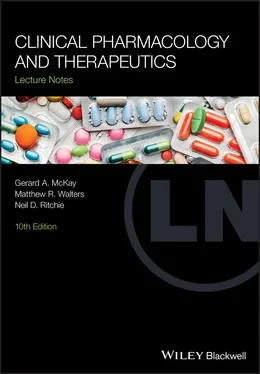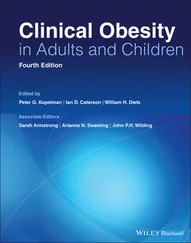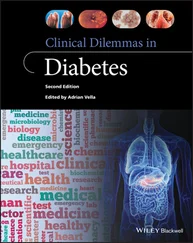3 Standard Gamble – respondents are asked to imagine being in the health state being valued and are then told that there is a treatment which could restore them to full health; however, the treatment also has the possibility of causing immediate death. They are asked to indicate what risk of death they would be willing to accept in order to be ‘cured’, a willingness to accept a higher risk of instant death leading to the value on the current health state being lower. Once again survival is being sacrificed (or at least risked) to improve quality of life.
An alternative approach to deriving utility values is an indirect method where a questionnaire is used to describe the current health state in terms of patient experience and function and then the results from the questionnaire are converted into a utility value by inviting patients or the general public to value the health states by the methods above. The EQ‐5D questionnaire is commonly used and it assesses quality of life in terms of five key dimensions; mobility, self‐care, usual activities, pain/discomfort and anxiety/depression. Each of these dimensions can be rated on either a three‐point (EQ‐5D‐3L) or five‐point (EQ‐5D‐5L) with the latter version being developed to overcome the potential for reduced sensitivity to changes in health state in the three‐level version. The resulting potential health states from the EQ‐5D have been converted to utility values using surveys of members of the general public in the UK.
None of the available methods of deriving utility values is perfect but used individually or in combination some meaningful assessment of quality of life can be obtained to factor into QALY calculation. Table 3.1shows examples of utility values for a number of common health states.
Table 3.1 Utility values from selected published studies.
| Disease state |
Utility value |
| Acute coronary syndrome (Karnon et al . 2008) |
0.80 |
| Progressive glioma (Rogers et al . 2008) |
0.73 |
| Relapse in multiple sclerosis (Gani et al . 2008) |
0.50 |
| Mild to moderate depression (Kendrick et al . 2009) |
0.70 |
| Symptomatic ulcer (Latimer et al . 2009) |
0.55 |
How is cost‐effectiveness then assessed?
As noted above, the convention in health economics is to describe the extra health gain from the more beneficial treatment and then to define the cost of this extra benefit. In CUA, this leads to a measure known as the incremental cost‐effectiveness ratio (ICER), which is described in Figure 3.2.

Figure 3.2 Incremental cost‐effectiveness ratio.
From the outcome of the simple calculation in Figure 3.2, one can give a value for the ICER as the extra cost per QALY gained, commonly known as ‘cost per QALY’.
To help decide if a treatment is cost‐effective, the resulting ‘cost per QALY’ can be compared with ‘costs per QALY’ for other interventions already adopted by the health service or to the decision maker's stated ‘willingness‐to‐pay’ for an additional QALY. In the UK, for many of the medicines it appraises, NICE uses a rule of thumb or ‘threshold’ that a cost per QALY of less than £20 000 is generally considered to be cost‐effective while a cost per QALY greater than £30 000 is generally considered not to be cost‐effective; decision makers in other countries may adopt other willingness‐to‐pay thresholds. Table 3.2shows the ICERs of some common healthcare interventions.
Table 3.2 Cost per QALY gained figures from selected published studies (references at end of chapter).
| Treatment |
Cost per QALY gained |
| Clopidogrel in acute coronary syndrome |
£2 284 |
| Carmustine wafers in glioma |
£54 500 |
| Natalizumab in multiple sclerosis |
£18 700 |
| SSRIs in mild to moderate depression |
£14 854 |
| Addition of a proton pump inhibitor to NSAID or COX 2 selective inhibitors |
£1 000 |
SSRI, selective serotonin reuptake inhibitor; NSAID, non‐steroidal anti‐inflammatory drug.
A simple example showing how such QALYs are calculated is shown in Table 3.3.
Table 3.3 An example of how QALYs are calculated.
| With treatment A |
With treatment B |
| Estimated survival = 12 years |
Estimated survival = 10 years |
| Estimated quality of life = 0.7 |
Estimated quality of life = 0.5 |
| QALYs = 8.4 (12 × 0.7) |
QALYs = 5 (10 × 0.5) |
| QALY gain from treatment QALYs (8.4 − 5) A over treatment B = 3.4 |
If treatment A costs £10 000 more than treatment B, then the cost per QALY gained with treatment A is £2 941 (£10 000/3.4). If the cost per QALY is less than a stated threshold value, it would be considered a cost‐effective treatment.
As has been discussed, pharmacoeconomics is not an exact science and the assessment of cost‐effectiveness requires a number of assumptions and/or extrapolations to be made. A good analysis should test the effect of varying these assumptions across a range of likely possibilities, showing which assumptions are the main drivers of the ICER – this is known as sensitivity analysis .
In a simple analysis, this can be done by varying assumptions one at a time ( univariate analysis). For example, if the estimated survival with treatment A is only 10 years (i.e. we take away the survival gain), then the QALY gain falls to 2 QALYs (10 × 0.7 = 7; 10 × 0.5 = 5, QALY gain = 7 − 5) – the ICER is now £5 000 (£10 000/2) which remains within usual cost‐effectiveness limits. The survival gain, which may be based on extrapolation from the clinical trial, is not essential for the drug to be considered cost‐effective. The utility values could be varied similarly.
In a more complex model involving multiple health states and more complex costs and benefits, it may be more appropriate to vary all the parameters at once across a range of likely values, giving a large number of possible ICERs reflecting different combinations of assumptions. This multivariate approach is often called probabilistic sensitivity analysis as it shows a range of possible ICERs with an estimate of the likelihood of the actual ICER being below any specified threshold value.
Pharmacoeconomics and decision‐making
Pharmacoeconomics and cost‐effectiveness assessment alone do not lead to decisions about which drug interventions a healthcare system should use. The economic assessment provides a structured, objective method to compare the costs and benefits of different possible interventions, but this may only be part of the decision‐making process. While an approach based purely on economic assessment might offer the greatest efficiency in a healthcare system, other factors, such as a desire to see equality of access to treatments or a desire to favour specific patients groups (e.g. children, or patients nearing the end of their life), may lead decision makers to adopt treatments with ICERs above the normal threshold (or reject treatments with ICERs below the normal threshold).
These difficult issues are ultimately matters of judgement rather than calculation, but the economic assessment at least provides useful background to the decision and reveals the extent to which efficiency is being sacrificed to the specific wishes of the healthcare system. While pharmacoeconomics clearly has its limitations, it offers the best available approach to underpinning the difficult decisions which scarcity and choice demand in increasingly cash‐limited healthcare systems worldwide.
Читать дальше













